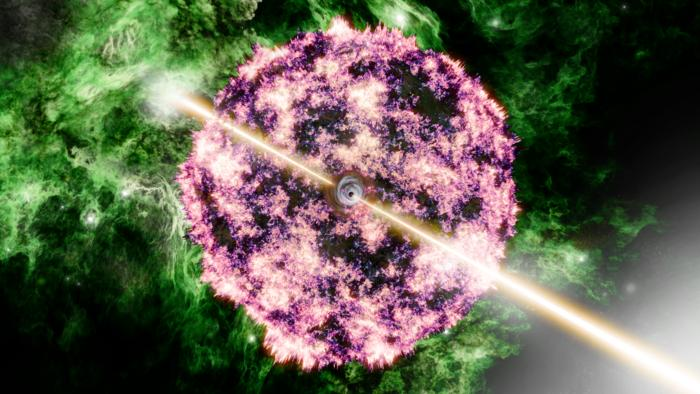New Delhi, April 12 (IANS) The brightest gamma-ray burst (GRB) ever recorded by scientists, in October 2022, was the result of a collapse and subsequent explosion of a massive star, or supernova, revealed a new study on Friday.
The burst known as GRB 221009A — dubbed the B.O.A.T. (“brightest of all time”) — is the largest explosion since the Big Bang.
It was found to occur once in every 10,000 years and was 70 times brighter than any yet seen.
The supernova was discovered using the powerful next-generation James Webb Space Telescope (JWST), said researchers from Northwestern University in the US, who were also among the international group of scientists to discover B.O.A.T.
In the research, published in the journal Nature Astronomy, the team speculated that evidence of heavy elements, such as platinum and gold, might reside within the newly uncovered supernova.
The team’s extensive search did not find evidence of these elements, yet they noted that the origin of heavy elements in the universe continues to remain one of astronomy’s biggest open questions.
“When we confirmed that the GRB was generated by the collapse of a massive star, that gave us the opportunity to test a hypothesis for how some of the heaviest elements in the universe are formed,” said lead author Peter Blanchard, a postdoctoral fellow at Northwestern’s Center for Interdisciplinary Exploration and Research in Astrophysics (CIERA).
“We did not see signatures of these heavy elements, suggesting that extremely energetic GRBs like the B.O.A.T. do not produce these elements. That doesn’t mean that all GRBs do not produce them, but it’s a key piece of information as we continue to understand where these heavy elements come from. Future observations with JWST will determine if the B.O.A.T.’s ‘normal’ cousins produce these elements,” he added.
Blanchard started his search, about six months after the GRB was initially detected.
It is because GRB was so bright that it obscured any potential supernova signature in the first weeks and months after the burst, he said.
Using the JWST’s Near Infrared Spectrograph he observed the object’s light at infrared wavelengths and found the characteristic signature of elements like calcium and oxygen typically found within a supernova.
“Surprisingly, it wasn’t exceptionally bright — like the incredibly bright GRB that it accompanied,” he said.

